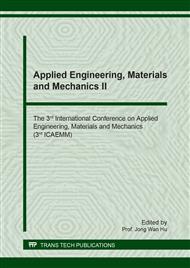p.202
p.208
p.214
p.220
p.225
p.233
p.238
p.244
p.249
Flow Characteristics of Microscale Porous Media with Varying Porosity and Pore Size
Abstract:
Sintered porous media are considered to be one of the best candidates to cool high temperature gas turbine components with blades and vanes for next-generation air cooling. The sintered porous media used in this study is made of the stainless steel SUS316L by metal injection molding process. The complex interaction between fluid and the porous medium causes fluid pressure drop when the fluid is forced to flow through the porous surface. In addition, the information on the relation between porosity and pressure drop of the porous media is important to saving the costs of the filter application and cooling process. This research is intended to understand flow characteristics of the porous media with the air fluid movement according to different porosity and pore size for gas turbine application. The experimental data compared with the calculation are examined for different experimental conditions, which indicate flow behavior of erratic and compressible on the microscopic scale porous media.
Info:
Periodical:
Pages:
225-229
Citation:
Online since:
July 2018
Authors:
Price:
Сopyright:
© 2018 Trans Tech Publications Ltd. All Rights Reserved
Share:
Citation:


